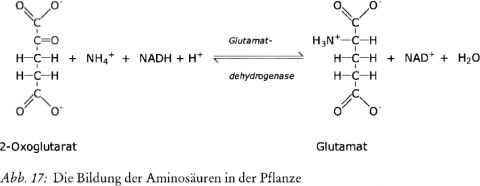Zur Begriffsbildung für die funktionellen Gruppen organischer Stoffe aus biologischen Prozessen
Export Article Citation as
- Download price : €6
Abstract:
Concerning a conception of functional groups based on biological processes
The functional groups of classical organic chemistry prove highly suited for classification purposes when their various process potentials are taken from the living world. Such a classification harbours information which accords better with the facts; we need only extend the usual way of understanding them. We have attempted to provide a new approach to functional groups through application of key concepts in chemistry, and in so doing, have demonstrated a surprisingly clear ordering. We have pursued two tendeneies:
a ) Increasing alkalinity amd acidity.- Here we can assume substances that are primarily sah-like in character. One pathway to acids carries us through aldehydes and ketones to carboxylic acids, while another more enhanced acidic pathway is identified in the mercaptans and sulphonic acids. The path to bases shows aromatics that are alkaline in nature, then the alcohols, the amines, the heterocyclics (aromatic rings with attached, reduced nitrogen) and finally the alkaloids.
b) Homeopolar and heteropolar bands: The homeopolar bonds show a tendency towards fixation, to persistencc in the formed substance. They become pure substance, largely removed from the ongoing process. Heteropolar bonds on the other hand are participants in the process, however they tend to»coagulate«too little in the material. Between these two poles lie living substances which mostly possess a heteropolar component, or get one mediated by phosphoric acid or a thioether, without becoming a mineral salt as an end product of the reaction. The molecular character of the bonds (homeopolar) - owing to the size of the molecule - is sah-like, while ionic bonds through their hydro-carbon chains are transformed into what are characteristically atomic-bonds.
It is in the world of organic materials that we observe all tendeneies that are at the same time observable in the inorganic realm of the periodic table, spread over a multitude of substances, and yet realised through just six non-metallic elements, five of which are found on the earth.
It is possible, then, to develop an overview which can be expanded in Class 12 of Waldorf-Steiner schools to cover the entire world of substances. In this way, we provide access to chemistry through the world of living things and consider materials as the outcome of living processes. We can claim, in the end, that materials are merely the captured images of ongoing processes.
References
- BEYER, H. & WALTER, W. (1981): Lehrbuch der organischen Chemie. 3. Hirzel Verlag Stuttgart
- FRISCH, K. (2002): Auf dem Weg zu einer natürlichen Ordnung der Pflanzensubstanzen. In: Scheffler, A. & Strüh, H.-J., Handeln und Erkennen in der Chemie, 5. 56 - 64. Sonderheft der Elemente der Naturwissenschaft. Dornach
- KARLSON, P. (1980): Kurzes Lehrbuch der Biochemie. Thieme Verlag Stuttgart, New York
- MOHR, H. & SCHOPFER, P. (1978): Lehrbuch der Pflanzenphysiologie. Springer Verlag Heidelberg, New York
- SCHAD, W. (2000): Für eine vernunftgemäße Chemie. Tycho de Brahe-jahrbuch für Goetheanismus 2000, S. 164 - 201. Niefern-Öschelbronn
- SCHEFFLER, A. (1982): Chemische Prozesse in den Naturreichen. Die Drei 4: 245 - 257
- SCHEFFLER, A. (1996): Von der Wandlungskraft des Feuers. Zum Chemieunterricht. Tycho de Brahe-Jahrbuch für Goetheanismus 1996, S. 373 - 410. Niefern-Öschelbronn
- STEINER, R. (1922): Konferenzen mit den Lehrern der Freien Waldorfschule in Stuttgart (GA 300). Konferenz vom 21.06.1922. Dornach 1975
- STEINER, R. (197531): Konferenzen mit den Lehrern der Freien Waldorfschulen in Stuttgart (GA 300). Dornach
- STRÜH, H.-J. & JÄCKEL, B. (2002): Abbau und Umwandlung bei biochemischen Prozessen am Beispiel der Gärungen. In: Scheffler, A. & Strüh, H.-J., Handeln und Erkennen in der Chemie, S. 115 - 131. Sonderheft der Elemente der Naturwissenschaft. Dornach
- WUNDERLIN, U. (1999): Die Prozessualität der mineralischen Chemie, deren Ordnungsprinzipien und physiologische Bedeutung - Zur Chemie-Epoche der 10. Klasse der Waldorfschule. Tycho de Brahe-Jahrbuch für Goetheanismus 1999, S. 87 - 132. Niefern-Öschelbronn
- WUNDERLIN, U. (2000): Von der Wirkungskraft des Lichtes - Zur Chemie-Epoche der 8. Klasse der Waldorfschule. Tycho de Brahe-Jahrbuch für Goetheanismus 2000, S. 222 - 266. Niefern-Öschelbronn
- WUNDERLIN, U. (2001): Von der Umwandlungskraft der Luft - Zur Chemie-Epoche der 9. Klasse der Waldorfschule. Tycho de Brahe-Jahrbuch für Goetheanismus 2001, S. 110 - 163. Niefern-Öschelbronn

